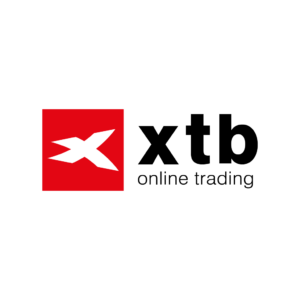PepsiCo is among the companies that are reaping from the unusual circumstances resulting from the global pandemic. According to the research data analyzed and published by Comprar Acciones, the food and beverage giant outperformed Wall Street expectations significantly.
Its net sales surged by 5.3% year-on-year (YoY) during the fiscal third quarter to $18.09 billion against an expected $17.23 billion. PepsiCo’s net profit grew by 9.1% from $2.1 billion to $2.29 billion YoY. As a result, adjusted earnings per share were $1.66 compared to $1.49 expected, resulting in a 10% increase.
For its Quaker Foods and Frito-Lay businesses, there was a 6% organic growth in revenue. Quaker Foods macaroni and cheese dishes as well as pasta reported growth in the double digits. On the other hand, Cheetos, Tostitos and Doritos had the highest sales under Frito-Lay.
!function(e,i,n,s){var t=»InfogramEmbeds»,d=e.getElementsByTagName(«script»)[0];if(window[t]&&window[t].initialized)window[t].process&&window[t].process();else if(!e.getElementById(n)){var o=e.createElement(«script»);o.async=1,o.id=n,o.src=»https://e.infogram.com/js/dist/embed-loader-min.js»,d.parentNode.insertBefore(o,d)}}(document,0,»infogram-async»);
PepsiCo’s international business segment also performed well, reporting 4% growth in organic sales. Based on the year-to-date (YTD) performance, the company updated its full-year 2020 guidance after having yanked the forecast in April amid economic uncertainty. For the full year period, it expects to deliver around 4% in organic revenue growth and $5.50 in core earnings per share (EPS).
PepsiCo Beverage Revenue Declines by 7% as Quaker Foods Soar by 23%
Part of the reason for PepsiCo’s stunning performance had to do with the diversification of its business. During Q2, 2020 PepsiCo’s revenue dropped by 3.1% to $15.95 billion as a result of poor performance in the beverage segment.
In the period which ended on June 30, 2020, net income was $1.65 billion translating to $1.18 per share. Comparatively, the previous year’s quarter had seen $2.04 billion in net income and $1.44 per share.
The North American beverage segment had a fall of 7% in revenue. On the other hand, organic sales for Frito-Lay North America grew by 6% while organic revenue for Quaker Foods North America soared by 23%.
Overall, H1 2020 saw PepsiCo’s beverage sales drop by 1% to $9.81 billion while unit volumes fell by 3% in North America. Group drink volumes sank by 4% while total group sales rose 3% to $29.33 billion.
Salty Snack Consumption Rises 19.4% YoY, Sweet Snacks, 16.1%
According to the NPD Group, snack food consumption by US consumers surged by 8% in April due to the pandemic. Between-meal snacking occasions for the average consumer rose by 4%. During that month, which happened to be the peak of stay-at-home orders, 37% of consumers said they wanted to have enough snacks on hand according to the same source.
The research firm pointed out that the trend was not an exception as people tend to turn to indulgent snacks during challenging times. For instance, during the Great Recession (2008 to 2010), there was an increase of 4.8 billion (+1%) snack eatings.
Data from Nielsen supports the premise; salty snack consumption increased by 19.4% YoY during the 13 weeks which started on March 16 and ended on June 13. Similarly, sweet snack consumption rose by 16.1%.
Not surprisingly, other snack food brands have also had a great 2020. General Mills reported a YoY increase of 45% in sales in March and 32% in April. Campbell Soup reported a 20% spike in the sales of Goldfish crackers in March.
Mondelez International also pointed to a sales surge of almost 30% in cookies and crackers during the early days of the pandemic. And deep into the pandemic, Kellogg’s reported that people were still buying 51% more frozen waffles, French toast and pancakes.
Coca-Cola’s Revenue Dips by 28%
In stark contrast, beverage companies like Coca-Cola and Heineken have had a challenging year. During Q2 2020, Coca-Cola reported a decline of 33% in earnings. Globally, unit case volume tumbled by -16%.
In terms of revenue, Coca-Cola reported its largest quarterly decline in at least three decades. Revenue dropped by 28% to $7.2 billion while net income tumbled from $2.61 billion (61 cents per share) to $1.78 billion (41 cents per share) YoY. Organic revenue fell by 26% during the period.
!function(e,i,n,s){var t=»InfogramEmbeds»,d=e.getElementsByTagName(«script»)[0];if(window[t]&&window[t].initialized)window[t].process&&window[t].process();else if(!e.getElementById(n)){var o=e.createElement(«script»);o.async=1,o.id=n,o.src=»https://e.infogram.com/js/dist/embed-loader-min.js»,d.parentNode.insertBefore(o,d)}}(document,0,»infogram-async»);
The volume of sparkling soft drinks sank by 12%, with Coke volumes dipping by 7% and Zero Sugar falling by 4%. Tea and coffee were worse hit, with a volume drop of 31% as a result of restaurant closures.
Similarly, sports drinks, water and enhanced water tumbled by 24% while dairy, juice and plant-based beverage volumes declined by 20%.
Heineken Holding also took a hit in H1 2020, reporting a net loss of $349.9 million compared to a profit of over $1.1 billion in H1 2019. The Dutch brewer’s adjusted operating profit sank by 53% as a result of dipping volumes occasioned by the pandemic. For the half-year, there was a revenue drop of 16%.







Question & Answers (0)